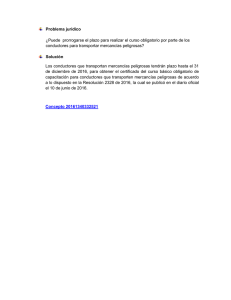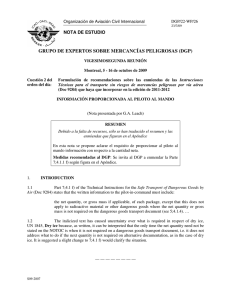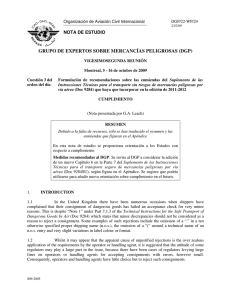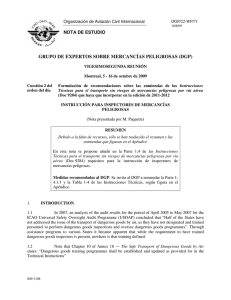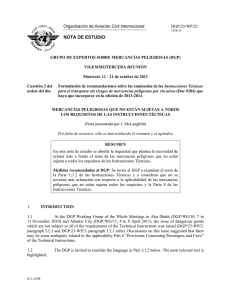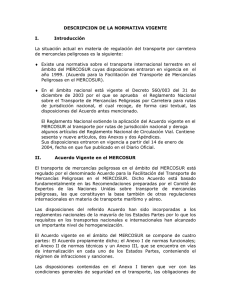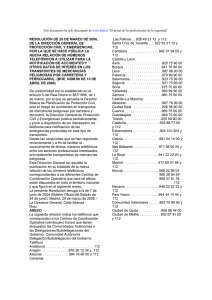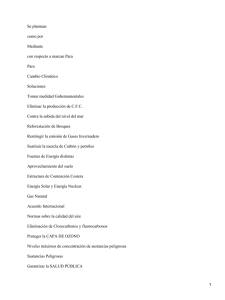nota de estudio
Anuncio
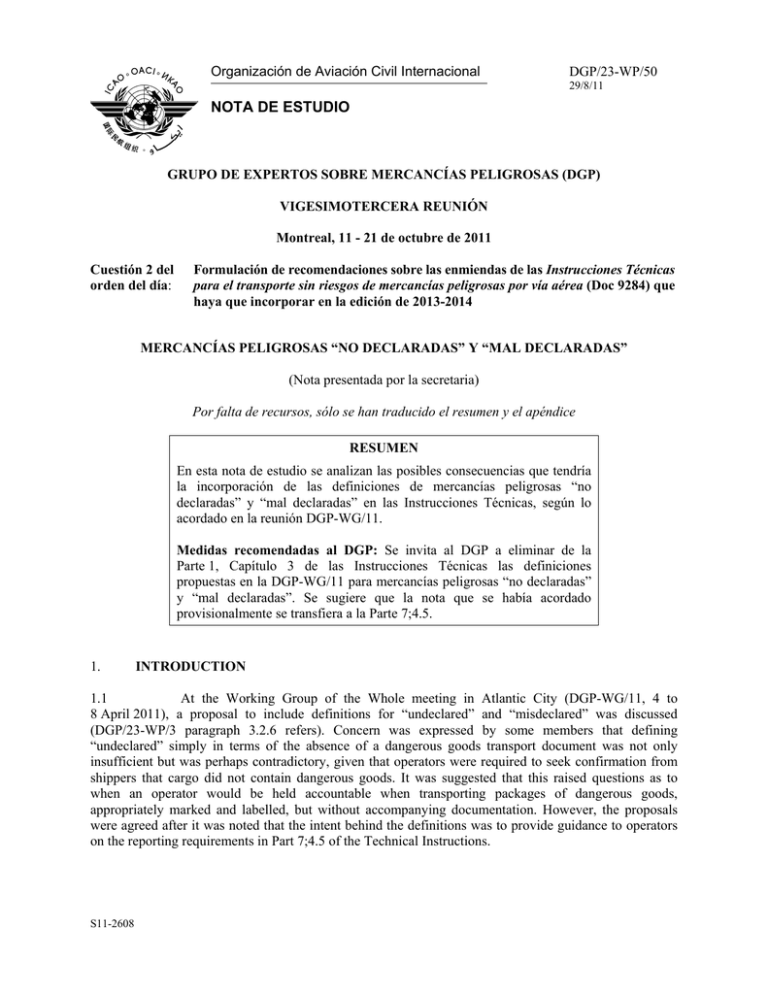
Organización de Aviación Civil Internacional DGP/23-WP/50 29/8/11 NOTA DE ESTUDIO GRUPO DE EXPERTOS SOBRE MERCANCÍAS PELIGROSAS (DGP) VIGESIMOTERCERA REUNIÓN Montreal, 11 - 21 de octubre de 2011 Cuestión 2 del orden del día: Formulación de recomendaciones sobre las enmiendas de las Instrucciones Técnicas para el transporte sin riesgos de mercancías peligrosas por vía aérea (Doc 9284) que haya que incorporar en la edición de 2013-2014 MERCANCÍAS PELIGROSAS “NO DECLARADAS” Y “MAL DECLARADAS” (Nota presentada por la secretaria) Por falta de recursos, sólo se han traducido el resumen y el apéndice RESUMEN En esta nota de estudio se analizan las posibles consecuencias que tendría la incorporación de las definiciones de mercancías peligrosas “no declaradas” y “mal declaradas” en las Instrucciones Técnicas, según lo acordado en la reunión DGP-WG/11. Medidas recomendadas al DGP: Se invita al DGP a eliminar de la Parte 1, Capítulo 3 de las Instrucciones Técnicas las definiciones propuestas en la DGP-WG/11 para mercancías peligrosas “no declaradas” y “mal declaradas”. Se sugiere que la nota que se había acordado provisionalmente se transfiera a la Parte 7;4.5. 1. INTRODUCTION 1.1 At the Working Group of the Whole meeting in Atlantic City (DGP-WG/11, 4 to 8 April 2011), a proposal to include definitions for “undeclared” and “misdeclared” was discussed (DGP/23-WP/3 paragraph 3.2.6 refers). Concern was expressed by some members that defining “undeclared” simply in terms of the absence of a dangerous goods transport document was not only insufficient but was perhaps contradictory, given that operators were required to seek confirmation from shippers that cargo did not contain dangerous goods. It was suggested that this raised questions as to when an operator would be held accountable when transporting packages of dangerous goods, appropriately marked and labelled, but without accompanying documentation. However, the proposals were agreed after it was noted that the intent behind the definitions was to provide guidance to operators on the reporting requirements in Part 7;4.5 of the Technical Instructions. S11-2608 DGP/23-WP/50 -2- 1.2 The Secretariat is of the view that including such definitions in Part 1 of the Technical Instructions would have the consequential effect of having contradictory requirements in the Instructions, particularly with regard to “undeclared” dangerous goods. On the one hand, operators are required under Part 7;1 of the Technical Instructions to “seek confirmation from shippers about the contents of any item of cargo where there are suspicions that it may contain dangerous goods” whereas on the other, relief would be provided to the operator from this requirement through the use of this definition. Noting that the original intent of the proposal was to provide guidance to operators on the reporting requirements, it is suggested, that at most, these definitions could be included in the form of a note to Part7;4.5, but it would be preferable to delete them. It is suggested that the note which had been agreed provisionally at DGP-WG/11 should then be transferred to 7;4.5. ———————— DGP/23-WP/50 Apéndice APÉNDICE ENMIENDAS PROPUESTAS DE LAS INSTRUCCIONES TÉCNICAS DGP/23-WP/3, párrafo 3.2.6: Parte 1 GENERALIDADES ... Capítulo 3 INFORMACIÓN GENERAL Partes de este capítulo resultan afectadas por la discrepancia estatal BE 1; véase la Tabla A-1 3.1 DEFINICIONES ... Mercancías peligrosas no declaradas. Mercancías peligrosas que se presentan para su transporte por vía aérea sin un documento de transporte de mercancías peligrosas, ni información aplicable al envío proporcionada en formato electrónico, ni otro tipo de documentación, cuando se permiten alternativas. Mercancías peligrosas mal declaradas. Mercancías peligrosas presentadas para el transporte por vía aérea: a) cuya descripción en el documento de transporte de mercancías peligrosas es incorrecta y que si fuera correcta, no se habrían aceptado para el transporte; o b) respecto de las cuales se establece, después de la verificación de aceptación requerida en 7;1.3, que no cumplen con las Instrucciones Técnicas. [Nota.— No es requiere notificar los casos en que no se cumple con las Instrucciones Técnicas que se establezcan al realizar la verificación de aceptación, aunque el explotador puede decidir hacerlo si se detecta un problema de importancia (p.ej., cuando se detecta utilización incorrecta de embalajes)] DGP/23-WP/50 A-2 Apéndice ... Parte 7 OBLIGACIONES DEL EXPLOTADOR ... 4.5 NOTIFICACIÓN DE MERCANCÍAS PELIGROSAS NO DECLARADAS O MAL DECLARADAS Todo explotador debe también notificar cualquier ocasión en que se descubran en la carga o en el correo mercancías peligrosas no declaradas o mal declaradas. Dicha notificación debe dirigirse a las autoridades que corresponda del Estado del explotador y del Estado en el cual esto haya ocurrido. El explotador debe notificar además cualquier ocasión en que se descubran en el equipaje de los pasajeros mercancías peligrosas no permitidas de acuerdo con lo establecido en 8;1.1.1. Dicha notificación debe dirigirse a las autoridades que corresponda del Estado en el cual esto haya ocurrido. [Nota.— No es requiere notificar los casos en que no se cumple con las Instrucciones Técnicas que se establezcan al realizar la verificación de aceptación, aunque el explotador puede decidir hacerlo si se detecta un problema de importancia (p.ej., cuando se detecta utilización incorrecta de embalajes)] ... — FIN —
